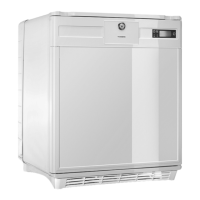
Do you have a question about the Dometic HC302D and is the answer not in the manual?
| Noise level | 45 dB |
|---|---|
| Certification | CB, CE, DIN 58345 |
| Climate class | SN |
| Fridge net capacity | 22 L |
| Fridge gross capacity | 33 L |
| Fridge temperature range | 2 - 8 °C |
| Connected load | 70 W |
| AC input voltage | 230 V |
| AC input frequency | 50 Hz |
| Annual energy consumption | - kWh |
| Door hinge | Right |
| Control type | Buttons |
| Product color | White |
| Built-in display | Yes |
| Shelves material | Metal |
| Appliance placement | Freestanding |
| Refrigerating medium | R134a |
| Number of vegetable drawers | - |
| Refrigerating medium weight | 38 g |
| Fridge number of shelves/baskets | 3 |
| Lamp type | LED |
| Package depth | 504 mm |
| Package width | 475 mm |
| Package height | 640 mm |
| Package weight | 22000 g |
| Depth | 450 mm |
|---|---|
| Width | 422 mm |
| Height | 580 mm |
| Weight | 20000 g |
| Width with door open | 820 mm |
Covers essential safety precautions and warnings for operating the device safely.
Details the refrigerator's materials, refrigerant circuit, versions, and thermometer functionality.
Explains the function of buttons, displays, and indicator LEDs on the control panel.
Describes the safety thermostat's role in preventing freezing of medicinal products.
Information on the integrated rechargeable battery for monitoring functions during power interruptions.
Details the internal fan operation and airflow requirements for optimal performance.
Explains how to connect an external alarm system to the device for alerts.
Steps for checking the packaging and the refrigerator for damage upon arrival.
Instructions for positioning and setting up the refrigerator in a freestanding configuration.
Guidelines for integrating the refrigerator into furniture as a built-in unit.
Procedure for safely connecting the refrigerator to the electrical power source.
Instructions for attaching and detaching the refrigerator door handle.
Recommendations for optimizing refrigerator energy consumption and efficiency.
Procedure for initial setup, including error code handling and temperature stabilization.
How to view and reset temperature readings and understand display features.
Explanation of different alarm events, their causes, and how to manage them.
Instructions on how and when to defrost the refrigerator to prevent frost buildup.




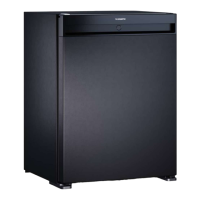
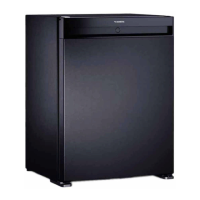


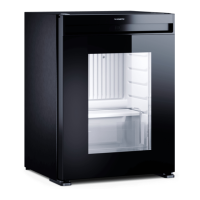

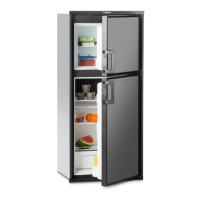

